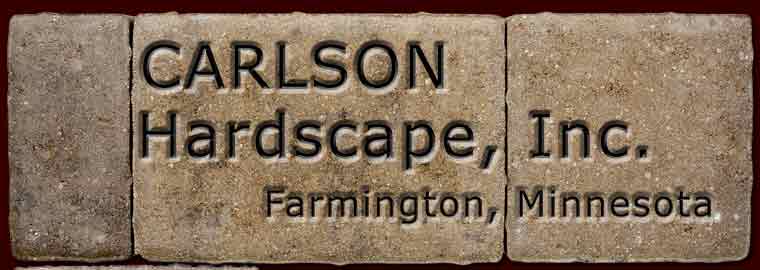
|
General Info:
Interlocking paver pavements, brick and concrete paver stone, are flexible. Interlocking paver pavements, brick and concrete paver stone, spread loads across an aggregate base and can move with small movements in the base without cracking. This is a huge advantage over concrete and asphalt in our part of the country because of our freeze/thaw cycles.
Installation Preparing:
After the area to be paved is determined, Carlson Hardscape Inc. (your paver contractor or paver installer) will arrange for public utilities located in the area to be marked. Any private utilities such as irrigation lines, invisible fence etc is the responsibility of the homeowner to locate. |
Excavation:
The depth of the excavation depends on the project and type of soil at your site. The base under the pavers must be thick enough to support loads to avoid rutting over time. Granular soil is best for drainage and strength, whereas clay soils require a thicker base. The excavated and based area will extend beyond the paved area approximately the thickness of the base. (Usually 6 to 12 inches).
Installing the Base:
The key to a successful paver surface is the base installation. After excavation, the exposed soil is compacted and the base material is installed. A Geotextile fabric may be used under the base in areas of unstable soil such as heavy clay soils or areas to be exposed to heavy traffic. In addition to the proper thickness, the base must be compacted thoroughly or settlement may occur. The base layer is also sloped to allow for water drainage away from buildings.
Edge Restraints:
Unless pavers are up against an existing curb or foundation an edge restraint is required. Restraints hold the pavers
|
|
tightly together preventing spreading due to horizontal forces on the surface. Carlson Hardscape Inc. uses Pave Tec edging which is installed directly over the compacted base.
Sand Bed:
Before the pavers can be laid, a bed of washed sand one inch thick is installed and leveled.
This same sand is used to sweep and fill the joints of the pavers after installation is completed.
Paver Installation:
After the sand bed is set, the pavers are laid in the sand bed. Care is taken to maintain straight bond lines and proper color mix. After the pavers are laid, a soldier course is cut in. This is usually a row of pavers around the perimeter of the surface. After all the pavers are laid, the surface is swept clean and a vibratory compacter is used on top of the pavers to set them into the sand bed. Bedding sand is also swept and vibrated into the paver joints. This process is what causes the surface to lock together. Excess sand is swept from the surface and the work sight is cleaned up. Your project is now ready for use. |